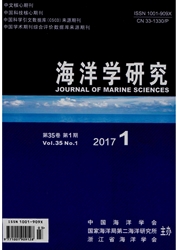

 中文摘要:
中文摘要:
综述了新近发现的海底热液活动的新类型——Lost City低温热液场。该低温热液场坐落于距洋中脊15km远的轴外洋底上,下伏的橄榄石经蛇纹石化反应所产生的热能是驱动该热液场的热源。低温热液场烟囱结构的矿物组分主要为方解石、文石和水镁石,热液流的温度为40~75℃.并以高pH值以及高氢、高甲烷含量为特征。Lost City低温热液场,为研究者们了解早期地球热液过程与它们所支撑的生命系统关系,探讨蛇纹石化、碳酸盐沉淀、微生物活动之间关系提供了天然实验室。
 英文摘要:
英文摘要:
The newly discovered Lost City Hydrothermal Field is located on 1.5Ma -old crust, nearly 15 km off the spreading axis at Mid-Atlantic Ridge. The heat source to drive this vent is from the exothermie serpentinization reaction between seawater and the olivin. The structures of the vent chimneys are composed of calcite, aragonite and brucite. The temperature of the vent fluid is around 40-75℃, and it is characterized by high content of hydrogen and methane. The discovery of the Lost City implies that there might be much more hydrothermal sulfide deposit in the off-axis area. The significance of the Lost City Hydrothermal Field is that it not only provides insights into hydrothermal processes of the early earth and the life form they supported, but also provides a natural laboratory to understand the links between serpentinization, carbonate precipitation and microbial activity in ancient ecosystems.
 同期刊论文项目
同期刊论文项目
 同项目期刊论文
同项目期刊论文
 期刊信息
期刊信息
